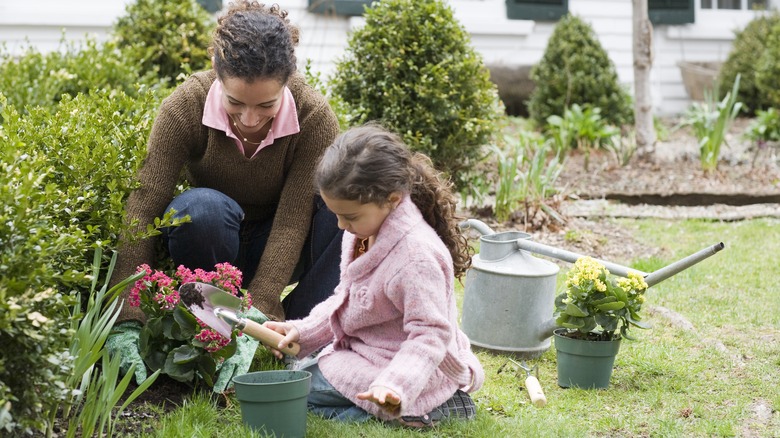The Clever Way That You Can Change Out Seasonal Plants In Your Garden In The Blink Of An Eye
As spring inevitably approaches yearly, there is pressure to find the time to prep your flowerbed and garden annuals. HGTV explains that annuals are well-loved for their affordable prices and being less of a commitment than perennials. From pinks, purples, blues, and yellows, you can switch things up each season and are never tied to one arrangement of flowers or colors.
While seasonal greenery is a significant and fresh change to outdoor areas, its downfall lies in the time-consuming task of replanting them so often. Most single-year plants will be sowed in the spring, bloom in the summer, and need to be removed once they wilt in the fall — a process that will be knocking on your door again within a few months. Winter annuals are also an option, germinating in the late summer and autumn so that they can sprout the following spring. Regardless of which annuals you plan to grow this year, here's a hack that will be the time saver you've been looking for.
The plant-in-a-pot method
Nature and Garden describes the plant-in-a-pot method as planting larger pots into the ground for your annuals to nestle into. Start by locating a container with drainage holes one size larger than your plant's current pot. Once you have buried this slightly larger receptacle in the ground with 1 to 2 inches of its rim showing, it is as easy as setting your seasonal plant snug inside and removing it once it is ready to be replaced.
The pot you have stuck in the ground is known as the socket pot, while the vessel you insert into the larger one is called the plug pot, per Nature and Garden. The socket pot should be sitting on highly draining material such as rocks, as it will stay in the ground yearly, becoming the home and drainage system for many different plants. This series of plugging in new plants whenever it is time for a change will make the frequent replanting process go from a few hours to a few minutes.
Pros and cons to consider
The convenient plant-in-a-pot method has more benefits than saving time and using less labor. Nature and Garden notes that this technique also controls invasive plants, makes watering days easier by ensuring water reaches the plant directly, and allows a better adjustment period for plants being brought inside for the winter. It also enhances the garden with decorative rimmed pots for an added flare.
As you consider using this approach for your plants, it's essential to understand all aspects, including the drawbacks. Naturally, potted plants won't be able to grow their roots as freely and will only snake through the drainage holes a bit. Plants with less room for their roots to expand won't grow as big and will need frequent watering. Since most seasonal plants don't last longer than a year, this limitation may not be too concerning, but it never hurts to be informed of it.


